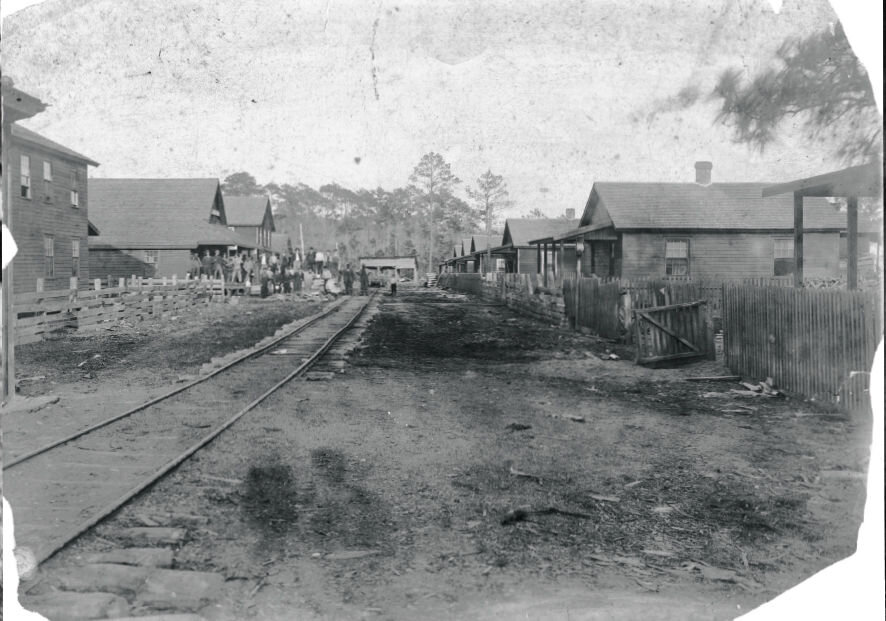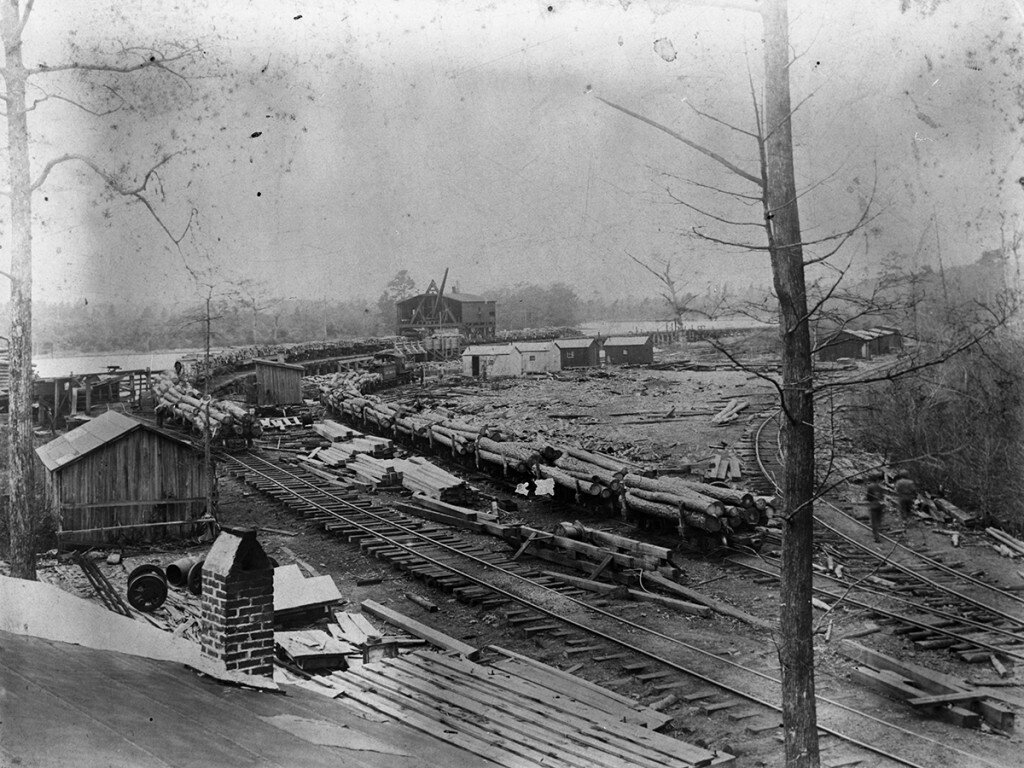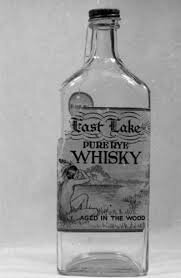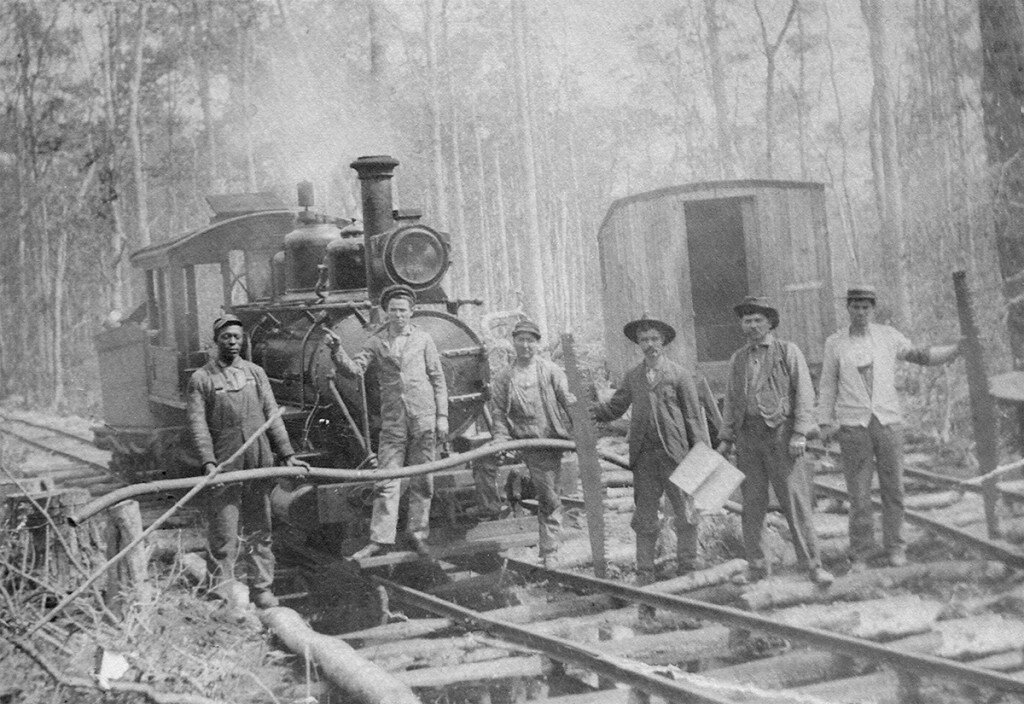East Lake By: John Ray and Travis Eller
Log Line: A diverse group of laborers in a small, dwindling logging community ban together to create the most sought after whisky during the Prohibition era. (Based on a true story.)
Not long after the Civil War a logging company out of Buffalo, New York bought large tracts of land in Dare County in Eastern North Carolina. The area was perfect for logging because it was located on a major waterway. The company brought in most of their employees, a mix of Russian and Italian immigrants as well as African Americans and local Carolinians. The company built cheap shotgun homes for their employees. Buffalo City was born. The town was segregated (white homes for Immigrant and African American employees and red homes for white employees) and yet it was a tight-knit community. It looked like a town out of the Wild West. At its height Buffalo City, NC had a population close to three thousand residents. After most of the land was logged out the company sold out and it changed owners several times.
In the mid-1920’s, at the height of Prohibition, three local brothers bought the company and this series is focused around them. John, Claude, and Ephram Duvall had figured out a clever way to make money where others failed. What they did was lay railroad tracks through the woods that enabled them to get to timber that was inaccessible. The timber was loaded on a barge and towed out by tugboat. In addition, they also produced Juniper shingles that can still be found on older beach homes on the Outer Banks today. John ran the sawmill, Claude ran the only store in town, and Ephram ran the logging operations. By this time, Buffalo City has dwindled to less than a hundred residents. The place was so remote that supplies had to be brought in by water. There were only two ways in and out of Buffalo City. One way was in and out by the road and the other by Millitail Creek and they were watched carefully.
The residents of Buffalo City had their own brand of justice too. It was cruel and sadistic and arguably necessary considering there was no law in Buffalo City. There are stories of people being publicly put in stocks, horsewhipped, and even in some cases burned alive. Our story opens with Ephram Duvall executing his good friend, Robert Gibbs, by burning.
Six months prior, Ephram Duvall, Robert Gibbs, Alonzo Pescada, Nikolai Rybakova, and Duke Ambrose are working in the logwoods debating on who makes the best whisky. Most families had stills. Unable to come to an answer they decide the best thing to do would be to ask an outsider. Captain Midgette of the Tug Hattie B. became the agreed-upon decider considering it was the only outsider they all knew. They meet Captain Midgette at the Dare Forest Bar and Eating House (ran by Claude Duvall’s wife Helen) and the good Captain prefers Robert’s corn whisky but Nikolai’s rye whisky is the smoothest he’s ever tasted. The alarm bells go off and Ephram, Nikolai, and Robert decide to start making it. They make a deal with Captain Midgette. They will give him five gallons of Nikolai’s rye whisky in exchange for 300 pounds of sugar (three hundred pounds of sugar will produce thirty-five gallons of whisky). Captain Midgette agrees and he executes the sale and delivers the sugar. This is how the ball gets rolling. Nikolai, Duke, and Alonzo produce the whisky while Ephram and Robert run it thirty miles by boat to various speakeasy’s in Elizabeth City NC. A division of labor is agreed upon and Claude and John reluctantly agree to launder profits out of the logging company. They all know there are only several years worth of timber left. John is most hesitant but decides his young son; William needs a good start in life besides just a good work ethic.
Agent Clark of the Prohibition Enforcement Bureau is sent to help enforce the Volstead Act in the area. Sheriff Westcott, of Dare County, warns Agent Clark about the people of Buffalo City. This only makes Agent Clark more determined. A sophisticated cat and mouse game ensues not just between law enforcement and the people of Buffalo City but the people of Buffalo City themselves. Greed and lust take over some residents with terrible consequences.
In just a few month’s time, this rye whisky became known as East Lake Whisky and it was highly sought after in Manhattan and Washington D.C. Within a year there were rumors it was served in London.
This is not a typical period piece of crime drama. This is a dark entrepreneurial tale that was driven out of necessity. Today, Buffalo City does not exist anymore. The last resident moved out over forty years ago and the wooded swamp has taken back over. All that remains are a few old rusty railroad tracks buried deep in the overgrown woods in a moonshine boomtown that once was.



